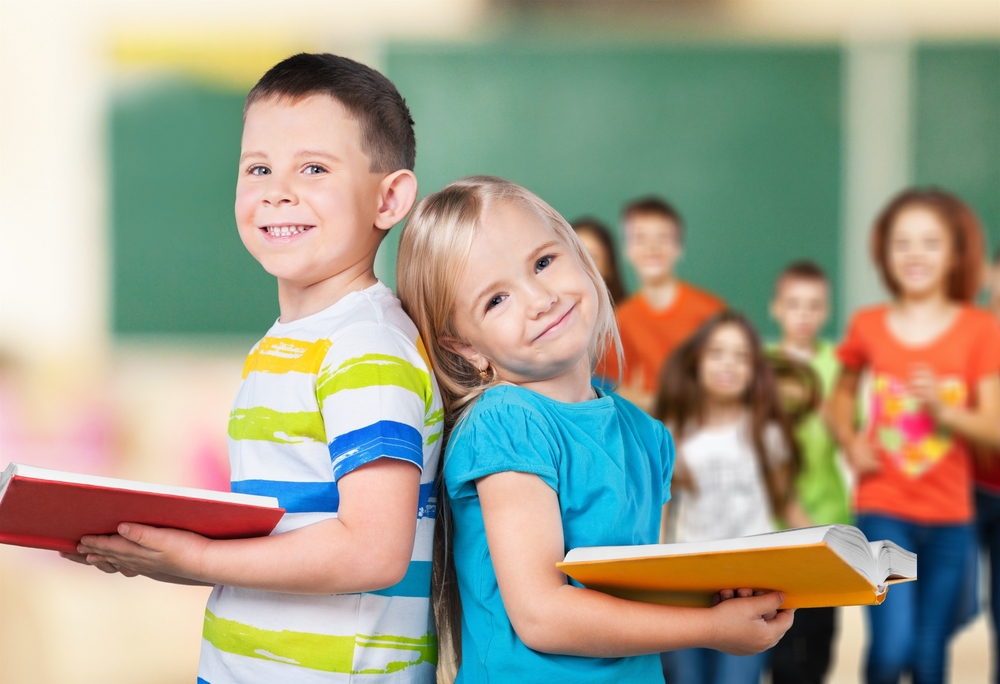Building Social-Emotional Skills During the Pandemic
Nov. 24, 2020

There’s no doubt that the mental well-being of children has suffered immensely in the past year. For many teachers and parents, striking the right balance between academic and emotional learning is tough during the pandemic, where many are feeling stressed and strained, yet the opportunities for socializing are few.
While building social skills in preschoolers and elementary-aged children might be a tough task, it’s still critically important to stay focused of the importance of social-emotional learning. In the past, elementary educators tacitly promoted social-emotional skills within their students via routines, team-building activities, and collaborative activities in the classroom, many of which are impossible to implement in the online or hybrid environment.
The Importance of Social-Emotional Learning
Just like adults, children are also grappling with the loss of their daily routines and social lives, as many parts of the country is shutting down yet again in attempts to thwart the latest wave of the virus from spreading.
Social-emotional learning, or SEL for short, can be defined as the process that people undertake to build their own emotional intelligence. This includes learning to manage one’s own emotions and to develop healthy attitudes and empathy.
As mentioned earlier, teachers ordinarily promote SEL in the classroom through everyday activities and kids lessons, but many of those same in-person classroom exercises are no longer possible if a school or class is fully or partially learning virtually. Fortunately, there are some creative strategies that educators can use to build SEL into the online class routine, as we will see below.

Emotional Intelligence Skill-Building in the Classroom
Most veteran teachers already have plenty of tricks up their sleeves to incorporate SEL into their in-person class but adapting those techniques to an online environment might take some planning. However, the first rule of thumb is to retain familiarity, as students thrive on structure and routine. Try the following to ensure that SEL is an important part of your distance class:
-
Adapt familiar classroom routines to the online learning environment
While many face-to-face activities are out of the question, basic classroom routines should be adapted to fit the virtual environment as closely as possible. This means that teachers should consider the basic structure of how class is run and make it as similar as possible to a traditional in-person day.
For instance, each class should engage students with the similar beginning routines, as well as closure activities. If the day would ordinarily begin with circle time to discuss the day’s date and weather, do the same thing in the online class. If class usually ends with a handwritten “exit ticket”, offer a way for students to complete the same exercise digitally.
-
Story time, greetings and regular check-ins
Story and circle time are a favorite part of the school day for children, and they should be included in the virtual classroom, too! What’s more is that these activities provide opportunities for instructors to talk with kids, and openly discuss and empathize with characters from the books they read together. Try to “gather” students together by turning on cameras when possible during story time. Ask questions and discuss picture books for engagement and SEL.
In addition, don’t forget about greeting children as they log online, just as you might greet them when they enter the classroom in the morning. Decide upon a method that you would like to implement so students feel seen and special as they show up for class. Hold regular individualized check-ins as a way to talk to students one-on-one, so schedule individual meetings when possible.
-
Discussion boards and journaling
One of the easiest ways to build social skills is by asking kids to think about and reflect back upon their feelings. You might be wondering how teachers can rely on discussion boards and journaling activities when young learners are just learning to read and write. The answer lies in finding a way around the literacy barrier by asking children to use the recording function within their learning management system (LMS).
To do this, use a verbal or recorded prompt within the LMS they use, whether it is Google Classroom, or something else. Instruct students how to use the microphone or video option to record their response. By utilizing journaling activities, students can think about their emotions, and the educator has a way to judge a student’s progress throughout the year.
Here you can find a few easy steps to set up your online classroom with Kids Academy for Schools using Google Classroom.
-
Build classroom collaboration using breakout channels
While not the perfect solution, the major video conferencing apps, such as Zoom or Teams, include an option to place students in small groups using breakout sessions or channels. Teachers can hop in between groups for discussion or to monitor children. For more oversight teacher’s aids or paraprofessionals can also join the breakout sessions to ensure that an adult is present in each group. Use this option to give students a meaningful way to socialize and collaborate with peers.

Building Social and Emotional Skills at Home
Parents might also be wondering how to build social skills and foster SEL while children learn from home. Some easy activities include harnessing your usual routines to transform them into rich learning experiences where kids can practice learning about their emotions. Try the following tips to increase SEL from home:
-
Like teachers, embrace the “Think aloud”
Educators like to use a technique called a “think aloud” to verbalize their thoughts as they complete a task to model the thought process for kids. Not only does this show students how one might go about thinking something through, but it can also assist learners in recognizing feelings and emotions in others. By revealing our thoughts, it humanizes us for our little learners.
Whether you are working together with your child on a household task or something for school, use a think aloud to demonstrate your thoughts as they occur. This will allow children to understand your thought process and process their own ideas, as well.
-
Make bedtime stories count
Most families enjoy bedtime stories as a way to spend quality time together with kids, but these stories can do double duty! Make your nightly stories count as enriching SEL exercising by choosing specific titles that can support your child’s emotional health.
Books that promote SEL focus on specific emotional issues that many children face as they grow, such self-esteem, taking risks, or tackling common fears. Based upon your own kid’s personal needs, choose titles to work through issues he or she may be facing.
Check out a vast collection of Kids Academy bedtime stories and fairy tales on our Youtube channel.
-
Play games together
Family games are always a fun opportunity for everyone to come together and share a common experience in an engaging way. More importantly, playing learning games, such as card games, board games, or even video games, can teach young learners to deal effectively with winning, losing, and collaborating as a team. As a parent, your role is to model the behavior your family believes is appropriate when handling such situations and instructing children on what is acceptable and unacceptable.
-
Complete household chores together
Most parents know that chores can be a useful way to build responsibility within their children, but did you know that it can serve as a meaningful way to promote SEL? To do so, avoid simply assigning a list of chores and crossing items off a checklist for a reward. Instead, complete the chores together as a team, so kids understand that everyone should work as a team. What’s more is that your child will watch how you deal with often boring and mundane tasks and persevere for the good of the family.
Promoting the growth of social-emotional skills can certainly be a challenge when students are in and out of school due to the pandemic. Thankfully, there are plenty of ways that educators and parents can foster healthy SEL by adapting both classroom routines and home activities. Use the above advice to help kids build social skills, even as the pandemic carries on through the new year!










